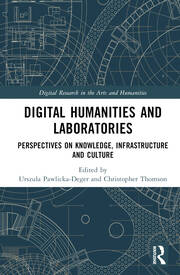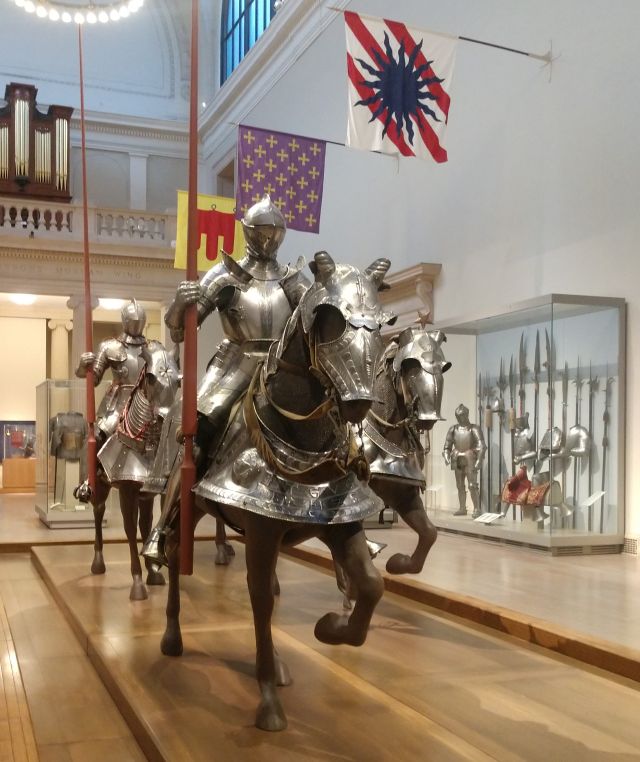One of the important things I’ve learned in my time as a curator and scholar is that it pays to play the long game. Establishing a professional relationship with an artist can lead to an exhibition years later. For CAA, I developed a 3-year participation timeline that culminated in sharing my dissertation research at a panel I co-organized. My dissertation itself has been an exercise in long-term planning and patience, with each day’s work leading toward completion.
The same goes for publications. Within the last six months, I’ve had four different scholarly publications appear digitally and in print. None of these works developed overnight, though. Rather, these publications resulted from research, writing, and networking spanning several years. Today, I’d like to review these works and discuss how I published them.
Book Chapter 1: Exhibition Work

In 2020, I participated in a virtual, asynchronous conference on museum exhibition design. At this conference, I speculated on the influence of day-to-day labor on the kind of art federal community art centers exhibited. Specifically, I argued that the logistics of train travel, combined with the architectural variety of community art centers and the equally variable experiences of the people who worked at them, encouraged a preference for durable, 2D works. Additionally, I considered the laboring experiences of the people who worked at community art centers. To do this, I took a closer look at the Roswell Museum’s labor history. I focused on its Hispano and women workers by addressing the careers of Domingo Tejada and Rainey Woolsey.
Shortly after the conference, its organizers, Claire Wintle, Hajra Williams, and Kate Guy, reached out to me. They were planning a book proposal expanding on the conference and asked me if I’d develop my paper into a chapter. They also asked if they could include a draft version of my chapter in their proposal. I eagerly agreed to both.
Three years after that initial conversation, Routledge published Histories of Exhibition Design in the Museum in November 2023. My chapter, “Exhibition Work: Exploring Labour in the Federal Community Art Center Project,” is the first one listed in the table of contents. During those three years, this piece underwent multiple revisions and changes, with the final work looking quite different from the original paper. Throughout the process, I had a very positive experience, and am proud to have my research included in this volume.
Book Chapter 2: At Home in the Digital Humanities?

If “Exhibition Work” highlights my historical research, “At Home in the Digital Humanities?” focuses on my contemporary engagement with museums and DH. Coauthored with Liz Losh and Laura Beltrán-Rubio, this chapter considers my assistantship with the Equality Lab during the 2020-2021 academic year. In particular, we discussed two virtual symposia we organized, Finding Home and Museums in Times of Crisis, by analyzing them through a framework of hospitality. Essentially, we argued that the two symposia modeled a scholarly practice based on ongoing conversation rather than product. The dialogue itself, we maintained, was the most important result, especially if it was unfinished and open-ended.
Liz Losh instigated this chapter after she received an invitation to contribute to a book exploring the intersections between digital humanities and laboratories. She wanted to write about the Equality Lab, and since Laura and I were graduate assistantships at the time, she invited us to collaborate. We agreed to keep tabs on our projects for the year, and use them as case studies for the chapter. In the spring of 2021, I wrote an outline and preliminary draft that we all subsequently expanded, revised, and refined. From there, the chapter went through multiple rounds of revision, including peer critiques from other chapter writers. The final work is a thoroughly collaborative piece, and I’m no longer sure who wrote what. That’s a good thing though. By writing this piece in partnership, everyone brought different contributions and perspectives, resulting in a more rigorous, dynamic work.
Book Review: Painting by Numbers

Book reviews are a great way to get publications. This is especially true when you’re a graduate student who is only starting to develop a body of research. Part of your job as a scholar is reading and interpreting other people’s work. You may as well get a publication out of it.
As an art historian interested in the digital humanities, Diana S. Greenwald’s Painting by Numbers was right up my alley. Although she focuses on different subject matter than I do, I found her quantitative analysis intriguing. She expanded the canon of art beyond the “greatest hits” to consider a much larger body of creative work. I also liked how she linked her quantitative analysis to the formal analysis of individual paintings or artists, as when she reinterpreted the work of Lilly Martin Spencer through an economic lens.
This review appears in Art Inquiries, the journal associated with SECAC, and it came about through my participation in the annual conference. In 2020, I presented some community art center research at a session on American art. One of the other panelists, Evie Terrono, shares similar scholarly interests, and we established a rapport. A couple of years later, when I saw that she managed the book reviews for Art Inquiries, I decided to pitch reviewing Painting by Numbers to her, as I’d already read it. She initially declined my proposal because the journal already had enough book review submissions for that issue. When one of the reviewers had to step down, however, she asked me if I could fill that missing slot. I did, and the final review appeared at the end of 2023.
Peer-Reviewed Journal Article: Laboring for Art Access

The most recent of my publications is a peer-reviewed article, published in the journal for the Space Between Society. Like my chapter “Exhibition Work,” this article considers the influence of labor on exhibition practices. Instead of focusing exclusively on community art centers, however, I also discuss the Neighborhood Circulating Exhibitions, looking at how on-site personnel at different exhibition sites contributed to the shows, focusing on custodians and teachers. When discussing community art centers, I also considered labor outside museum staff by considering their sponsoring groups.
Like “Exhibition Work,” this article developed out of a conference paper, this time given at the Space Between Society’s annual meeting in 2022. After the conference, I reached out to the journal’s editor, Jennifer Nesbitt, as I’d met her personally through attending conferences and participating in Board meetings. I pitched the idea of expanding the conference talk into an article. She offered suggestions to expand it, and I worked up a draft. After two anonymous reviewers critiqued it, I restructured my argument to emphasize the Neighborhood Circulating Exhibitions’ labor. Additional rounds of revision followed, and in February, it appeared online.
Takeaways
Scholarly publishing is a hallmark of academic life, but it’s neither intuitive nor easy. Some of my publications developed out of chance opportunities, such as being the Equality Lab’s graduate assistant at the right time. More important than chance though, was networking. Liz Losh felt comfortable asking Laura and me to coauthor a chapter with her because she’d already seen our scholarly work in her digital humanities seminar. I pitched ideas to Art Inquiries and the Space Between Journal because both editors were already familiar with my work. Knowing people doesn’t guarantee publication, but it can provide some much-needed momentum.
If you’re interested in publications, then, I recommend networking and building relationships. Yes, doing your research and writing should be your first priority. But engaging with other scholars will both enrich your work and open new opportunities for getting it out there. It’s certainly been true for me.